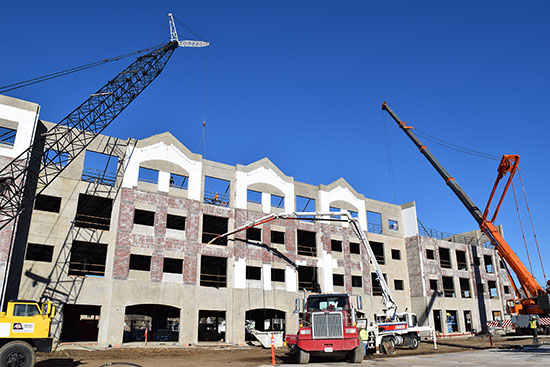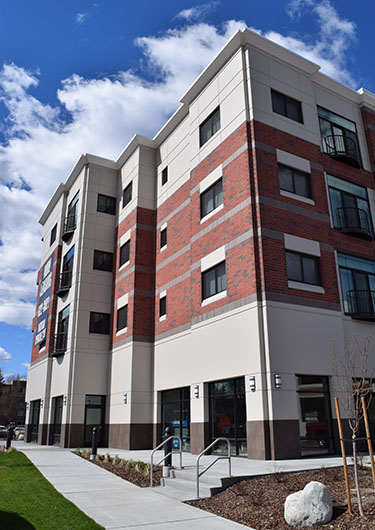|
Subscribe / Renew |
|
|
Contact Us |
|
| ► Subscribe to our Free Weekly Newsletter | |
| home | Welcome, sign in or click here to subscribe. | login |
Construction
| |
 |
May 9, 2017
Tilt-up structures

Matilda Building
Location: Spokane
Owner/developer: Ferdinand CJF LLC
Team: Divcon, general and concrete contractor; Ron Joseph Architecture, architect; DCI Engineers, structural engineer; Central Pre-Mix Concrete Co. (doing business as Oldcastle Materials), ready-mix supplier

The Matilda Building is an 88,000-square-foot tilt-up structure near Gonzaga University. It contains three floors of upscale apartments over one floor of retail.
The project also includes a 14,000-square-foot parking garage composed of cast-in-place concrete columns and walls; tilt-up walls and spandrels; post-tensioned tilt-up spandrels; and cast-in-place, post-tensioned elevated slab and beams.
The owners wanted to create a long-lasting building with brick details that would fit seamlessly into its surroundings.
The building was designed as a four-story tilt-up structure that is 300 feet long, 80 feet wide, 54 feet tall, and contains three different slab elevations on the main floor created by two 18-inch steps. Combine this with a major north-south arterial on the west side of the property and a rental house at the northeast corner, and you have a fairly compact site that created challenges for a concrete tilt-up building of this size.
After some analysis it was determined that it would be safer and more economical to create a three-story tilt-up wall panel with the fourth-floor walls stacked on top. The architectural-grade tilt-up panels with embedded brick were cast on the building slab, over the top of the cast-in-place elevator pits, as well as on nearly 22,000 square feet of casting slab.
The three-story panels were erected and braced to the outside of the building using helical anchors to allow for structural steel installation while minimizing the impact on the general public by keeping the crane operations out of the street.
Structural steel installation started once the three-story panels were erected, and the team then started working on building the fourth-floor panels on the previously used casting slabs. Once the fourth-floor slab was poured, the fourth-floor panels were erected and braced to the cast-in-place inserts in the fourth-floor slab.
The use of concrete slabs on metal deck at all elevated floors provided the owner with a solid floor system that created a great sound barrier between the apartment levels as well as the retail level. Two large shear walls were created by stitching together multiple three-story, 12-inch-thick concrete panels and tying them together at the fourth floor with a single-story, cast-in-place wall.
Cast-in-place walls, columns and tilt walls were used at the main floor. Site-cast spandrels were utilized at the second floor and roof.
Two of these spandrels were 60-foot-long, post-tensioned concrete panels that span over the covered exterior parking. A post-tensioned, cast-in-place slab with post-tensioned beams was placed for the elevated parking deck.
Other Stories:
- Grand Award
Public works: Bridges - Special applications: Resiliency
- Community Award
- Concrete paving
- Pervious concrete
- Artistic and decorative concrete
- Residential concrete
- Public works: Renovations
- Public Works: Infrastructure
Sustainable Merit - Cast-in-place structures
- Cast-in-place structures: Parking garage
Special applications: Technical merit (tie) - Special applications: Technical merit (tie)


